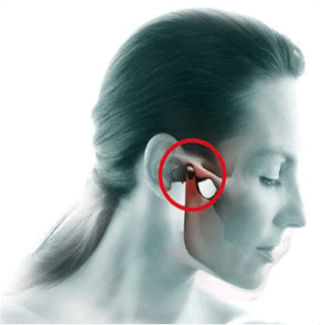
More Dental Health Articles
TMD From a Woman’s Perspective

Believe it or not, most of the research out there shows that women are more prone to TMD (Temporomandibular Disorders) issues than men. There are a few theories on this that might be interesting to investigate. First of all, women are regarded as generally being more sensitive than men and even more nurturing. This might explain why they would feel more pain or be more aware if there is a problem with the body. And being the nurturer in the family means being more aware of not only their own pain, but the pain of others. Maybe this is why the new patients that we see are mostly women.
Another factor with women experiencing more TMD is that the disease process known as EDS (Ehler Danlos Syndrome) is far more common in women than men. In fact, the most common subtype of EDS (hEDS- hypermobile EDS) shows that 90% of the patients are women. This number is staggering. And with the more common forms of EDS, it turns out that the prevalence is roughly 70% women and only 30% men have it. Again, this is a remarkable difference that exists in a disease process that greatly affects TMD. With EDS the ligaments and joints are all looser than they should be so the discs on top of the jaw bones (the condyles) are far more likely to slip off or become displaced.
So along with joint laxity, the EDS patient has to contend with a much higher risk of developing TMD problems. According to many of the doctors who treat EDS, joint laxity is a much more common disorder (disease) than previously thought and is far more prevalent amongst our people than anyone really realizes. What this means for the TMD patient is that they have another problem to contend with potentially and a higher need for treatment exists. Maybe this is why so many people are hurting, have displaced discs, and are not all that aware of the problem? Many people show up at the doctor’s office not really sure why they are aching, have headaches, jaw pain, neck pain, or even tremors when all along it’s a TMD problem that can and should be dealt with.
Women also have the added problem as they age, their estrogen levels begin to drop. During menopause the lower levels of estrogen predispose the jaw joints to degenerate and this can increase alveolar bone loss. The bone loss means the structure of the jaw joint is breaking down which will mean the disc can slip off the condyle more readily and TMD issues begin to take place: headaches, neck pain, etc.
Regardless of the situation, it does seem that women are more prone to TMD problems and should have a proper professional diagnose their condition and treat it before it becomes more complicated and even more painful. Seek out a doctor who treats the TMD problem on a daily basis and take charge of your life!
Other Articles You May Find of Interest...
- Appliances Are In Now: How To Manage TMJ Disorder
- Why The Tooth Fairy Is Very Fun – and Important!
- Let’s Smile Dental’s 7&Up Club
- Strengthening Smiles: Understanding the Importance of Splinting Periodontally Involved Teeth
- Understanding Soft Tissue Grafting: A Key To Periodontal Health
- New Solutions for Dentures and Dental Implants
- Benefits Of Immediate Dental Implants

















